| Lesson 7 | Manufacturing and technical implications |
| Objective | Identify the link between manufacturing and eBusiness. |
Connection between Manufacturing and Technology
As the digital age matures, the links between manufacturing and e-business become increasingly intertwined, painting a vivid tapestry of how traditional industries can be revitalized and revolutionized through the lens of electronic commerce and digital enterprise.
The confluence of manufacturing and e-business is not merely a convergence of two distinct domains but rather a symbiotic melding that redefines the contours of modern industry. As an e-business architect, recognizing and leveraging these links can lead to transformative strategies that not only elevate manufacturing practices but also redefine the value proposition for consumers in a digitally interconnected world.
- Digital Supply Chains and Logistics: e-business architectures have reshaped supply chains, morphing them from linear entities into dynamic, interconnected ecosystems. Manufacturers can now tap into real-time data analytics to streamline inventory management, optimize production schedules, and enhance demand forecasting. Platforms such as ERP (Enterprise Resource Planning) and SCM (Supply Chain Management) systems provide centralized hubs that fuse e-business with manufacturing logistics, ensuring efficient and agile operations.
- Direct-to-Consumer Models: Traditionally, manufacturers relied heavily on intermediaries – distributors, wholesalers, and retailers. E-business has forged a path for manufacturers to engage directly with end consumers. Brands like Tesla and Nike have exemplified how manufacturers can harness e-commerce platforms to bypass traditional retail channels, fostering direct customer relationships and driving higher profit margins.
- Mass Customization and Personalization: The digital pivot empowers manufacturers with the capability for mass customization. Consumers, using e-business platforms, can personalize products to their preferences, whether it's designing a bespoke pair of shoes or custom-configuring a car. This customer-centric manufacturing approach, fueled by e-business interfaces, enhances customer loyalty and allows manufacturers to cater to niche market segments efficiently.
- Smart Manufacturing and IoT: E-business transcends mere online transactions. The realm of IoT (Internet of Things) converges with manufacturing to birth 'smart factories.' Here, interconnected devices across the manufacturing floor communicate in real-time, optimizing processes, reducing downtime, and enhancing product quality. This melding of e-business technologies with manufacturing operations underscores the future of Industry 4.0.
- Augmented Reality (AR) and Virtual Reality (VR) Integration: E-business platforms are harnessing AR and VR to revolutionize the customer experience. In sectors like furniture manufacturing or automotive production, consumers can use AR or VR to visualize products in real-world scenarios before making purchase decisions. This immersive intersection of manufacturing and e-business tools can drastically reduce return rates and boost customer satisfaction.
- Sustainable and Ethical Manufacturing: The digital transparency afforded by e-business platforms has placed an onus on manufacturers to adopt sustainable and ethical practices. Consumers, stakeholders, and regulators demand visibility into manufacturing processes, sourcing practices, and environmental footprints. E-business platforms that provide this transparency can enhance brand reputation and foster trust in the market.
- Global Markets and Localization: Manufacturers, buoyed by e-business platforms, can reach global markets more efficiently than ever. Yet, this global outreach is complemented by localization. E-business tools allow manufacturers to tailor products to local tastes, preferences, and regulatory standards, ensuring global reach without compromising local relevance.
- Continuous Feedback and Product Development: E-business platforms provide manufacturers with a direct feedback loop from consumers. Online reviews, feedback forms, and digital interactions can inform manufacturers about product improvements, potential innovations, and market demands. This continuous feedback cycle ensures that manufacturers remain responsive and adaptive to evolving market needs.
The confluence of manufacturing and e-business is not merely a convergence of two distinct domains but rather a symbiotic melding that redefines the contours of modern industry. As an e-business architect, recognizing and leveraging these links can lead to transformative strategies that not only elevate manufacturing practices but also redefine the value proposition for consumers in a digitally interconnected world.
Manufacturing and Technical Implications
It should come as no surprise by now when we say that the effect of a successful eBusiness implementation on the manufacturing requirements of a company must not be ignored. So how does >manufacturing relate to eBusiness?
In identifying the link from eBusiness to manufacturing, the eBusiness architect will need to consider build capacity and flexibility, the impact of international standards, and how mass customization will change the manufacturing philosophy.
In identifying the link from eBusiness to manufacturing, the eBusiness architect will need to consider build capacity and flexibility, the impact of international standards, and how mass customization will change the manufacturing philosophy.
- Build capacity: In previous lessons, we have pointed out that the company's stock holding levels may need to be increased to accommodate the different demands for stock in a "mail order" type of business, and that this fact alone will require a temporary increase in manufacturing output to create the extra stock. However, the success of the eBusiness in increasing sales will undoubtedly need to be matched by changes to manufacturing capabilities. How does the architect plan for this? The following series of images below describes how the architect might address manufacturing issues in his/her design.
Planning for changes to Manufacturing Capability
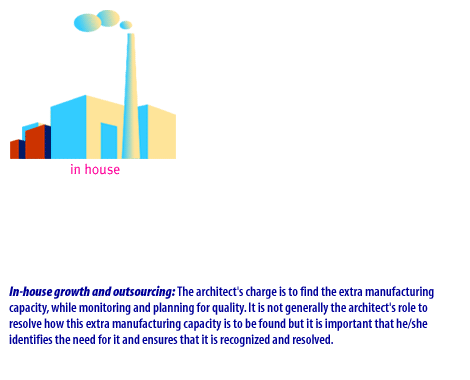
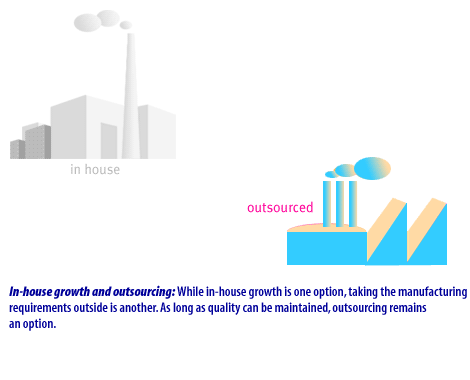
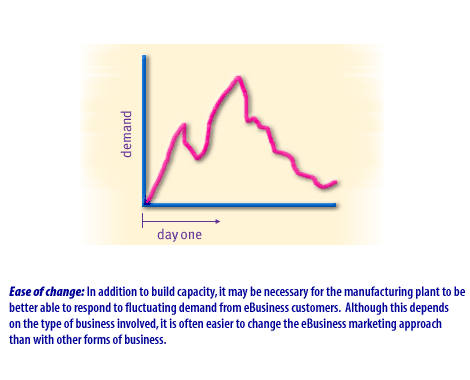
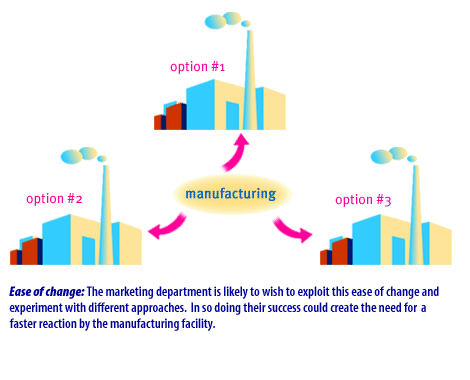
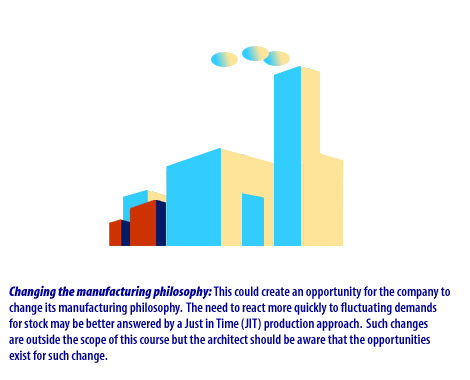
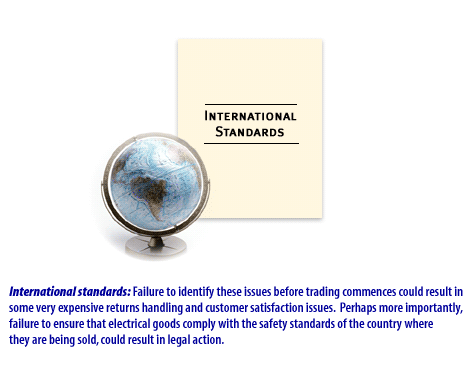
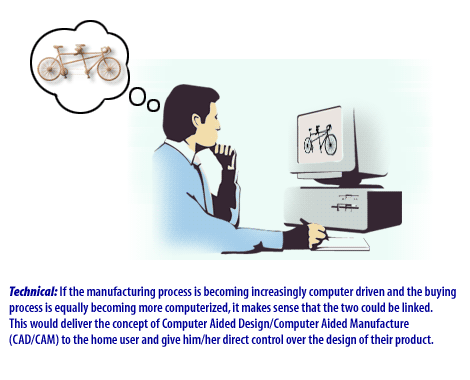
Linking CAD and CAM
As mentioned above, linking Computer Aided Design and "Computer Aided Manufacturing (CAM)" offers significant benefits to the customer.
The table below describes the benefits that this "mass customization" would deliver to both buyer and manufacturer.
The next lesson wraps up this module.
| Benefits to the buyer | Benefits to the manufacturer |
| Customized design of products to suit tastes, for example, combinations of colors, fabrics, materials eTailoring of garments to all shapes and sizes and shape for a better fit Potential cost reductions as products are made to order without associated excess inventory and distribution costs | Just-In-Time (JIT) manufacturing concept resulting in less inventory (both raw materials and finished stock) and less cost Greater customer satisfaction with less returns, leading to increased sales More customer and product requirement information, allowing automated links to manufacturing support processes like MRP (Materials Requirement Planning), pattern cutting and planning, and so on Reduced costs of distribution as the customer has a direct link to the factory |
The next lesson wraps up this module.
ebusiness Incorporation into existing Business Services - Exercise
Click the Exercise link below to complete an exercise on the incorporation of e-business into existing business services.
existing Business Services - Exercise
existing Business Services - Exercise